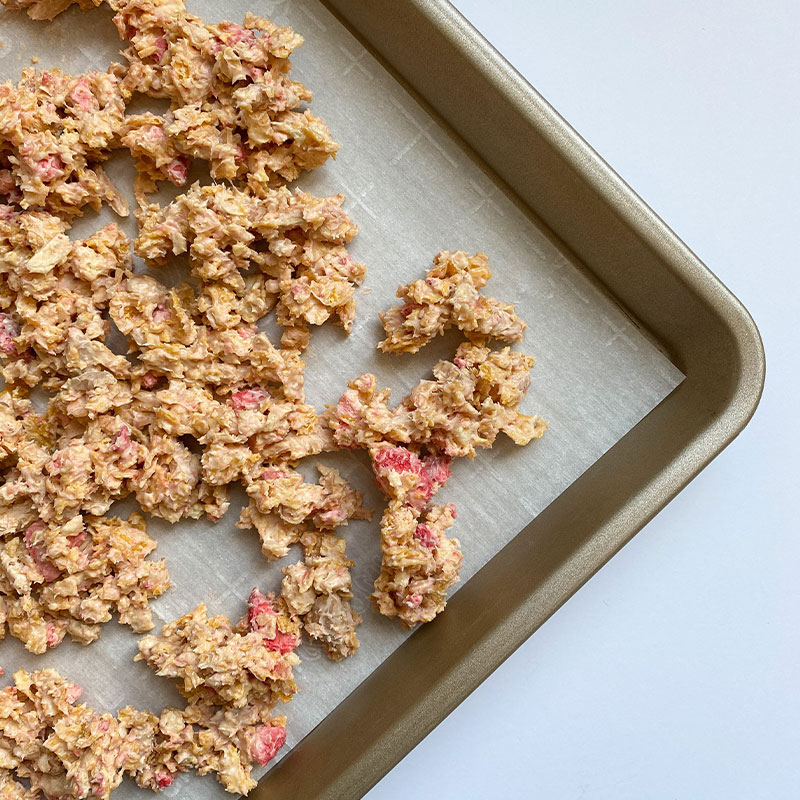
Even though today is National White Chocolate Day, the very mention of white chocolate immediately draws people into one of two camps – those who love white chocolate and those who do not.
Those who love it love it for the creaminess and taste and those that don’t almost always say that white chocolate is not “real” chocolate.
Where Chocolate Comes From
The cacao tree (Theobroma cacao), which is native to the Amazon rainforest, is primarily cultivated in tropical regions near the equator, within a limited geographical range known as the “cocoa belt.” This belt is located between 20 degrees north and 20 degrees south of the equator. Some of the key countries where cacao trees are commonly grown include West Africa, South & Central America, and Southeast Asia.
Chocolate comes from a cacao bean which grows on a cacao tree. The cocoa bean (technically cocoa seed) is the dried and fully fermented seed of Theobroma cacao, from which cocoa solids (a mixture of nonfat substances) and cocoa butter (the fat) can be extracted.
Milk and dark chocolate come from the whole bean, however, white chocolate comes from just the cocoa butter. White chocolate is typically made of sugar, milk, and cocoa butter, but no cocoa solids. It is not actually white but pale ivory in color and lacks many of the compounds found in milk, dark, and other chocolates. It is solid at room temperature (25 °C (77 °F)) because the melting point of cocoa butter, the only white cocoa bean component, is 35 °C (95 °F), approximately body temperature.
The Definition of White Chocolate
The definition of white chocolate, like other forms of chocolate, is complex and varies from country to country, with each nation setting its own standards. In its simplest terms, in the United States, the Food and Drug Administration (FDA) provides a specific definition for white chocolate, which includes the following criteria: white chocolate must contain a minimum of 20 percent cocoa butter, a minimum of 14 percent total milk solids, a minimum of 3.5 percent milkfat, and a maximum of 55 percent nutritive carbohydrate sweeteners (typically sugar). The remaining 7.5% consists of additional ingredients, often including fillers like lecithin, flavorings, whey products, and, more commonly, additional powdered milk.
There is a common misconception that white chocolate is of lower quality, but in reality, it is made predominantly from cocoa butter, which happens to be the most costly component. This is evident from its extensive use in the cosmetics industry.
A Quick Primer on Tempering
The instructions of the Valrhona White Chocolate Strawberry Rocher, call for the white chocolate to be tempered. If you never have done this before, don’t be alarmed anyone can temper chocolate.
Tempering is a process in which temperature is carefully controlled by removing the heat as it is released when liquid fats crystallize. The fat is held at a specified temperature for the time required for the crystals to form and to stabilize in the favored crystal form.
In other words, tempering chocolate simply means melting the chocolate while controlling how its temperature rises and falls. This technique lets you use the chocolate the way you want.
When you temper chocolate it 1) keeps the chocolate shiny and smooth; 2) makes it easier to turn out your chocolates from the molds, and 3) snaps cleanly when broken.
Not all chocolates are tempered at the same temperature. Milk chocolate is different from dark chocolate which is different from white chocolate.
| TEMPERATURE | DARK CHOCOLATE | MILK CHOCOLATE | WHITE CHOCOLATE |
| Temp #1 | 122°F (50°C) – 131°F (55°C) | 113°F (45°C) – 122°F (50°C | 113°F (45°C) – 122°F (50°C) |
| Temp #2 | 82°F (28°C) – 84°F (29°C) | 81°F (27°C) – 82°F (28°C) | 79°F (26°C) – 81°F (27°C) |
| Temp #3 | 88°F (31°C) – 90°F (32°C) | 84°F (29°C) – 86°F (30°C) | 82°F (28°C) – 84°F (29°C) |
There are various ways to temper chocolate including tabling, in a bain-marie, seeding, and microwaving.
In addition to tabling and seeding, Chef Mario Bacherini, West Coast Pastry Chef for Valrhona USA, says that microwaving chocolate is another option. He does note that this is “not my favorite tempering technique, but the concept is fascinating and if you are in a rush and have limited space, it could be a valuable solution.”
“Basically, when we take ‘fresh’ chocolate straight out of the bag, it already comes tempered from the factory,” states Chef Bacherini. “Therefore if we manage to bring it back to liquid form without compromising its pre-crystallization (up to 34C/92F max), we can use the chocolate straight out of the bag.” He goes on to say that if you accidentally go over the indicated temperature, just start over and use the tabling or seeding method.
White Chocolate Strawberry Rocher

Recipe courtesy of Valrhona USA
Yield: 8-10 pieces
| INGREDIENTS | IMPERIAL MEASUREMENT | METRIC MEASUREMENT |
| Flake Cereal | 4 1/4 ounces | 120 g |
| Granola | 1 1/3 ounces | 40 g |
| Freeze Dried Strawberries | 2/3 ounce | 20 g |
| Shortbread Cookies | 2 1/8 ounce | 60 g |
| Ivoire 35% White Chocolate | 15 ounces | 425 g |
Directions
Combine all ingredients except chocolate.
Temper the chocolate, Valhona Ivoire 35% White Chocolate, and add to thoroughly coat the mixture.
Immediately spread onto a silpat or parchment-lined half-sheet pan and let crystallize completely in a cool, dry place.
Store in an airtight container.
Sources:
The Chocolate Journalist
Dame Cacao
Food and Drug Administration